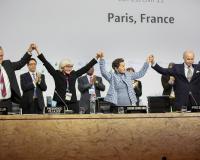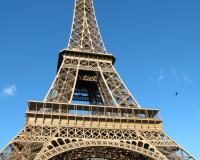
Vibrant Environment
Climate Change And Sustainability
All | Biodiversity | Climate Change and Sustainability | Environmental Justice | Governance and Rule of Law | Land Use and Natural Resources | Oceans and Coasts | Pollution Control

The annual business meeting of the parties to the United Nations Framework Convention on Climate Change (UNFCCC), the 22d such Conference of the Parties (COP 22), just concluded in Marrakech, Morocco. At the top of the agenda was implementation of the Paris Agreement, which entered into force November 4, 2016, just days before the COP opened and the U.S. election. The latter apparently shifted the focus of hallway conversations as President-elect Donald Trump’s views on climate change and climate treaties were of great interest to participants and observers.

As the Paris Agreement enters into force today, it is important to recognize both the significance of this event and the substantial work now required to implement its provisions. While much attention has been given to its goal of limiting the rise in global temperature to “well below 2°C” relative to pre-industrial times, and to pursue efforts to limit warming to a 1.5°C increase, the real significance of the Paris Agreement is that at least 190 countries and the European Union have pledged to reduce their emissions of greenhouse gases (GHGs).

Something extraordinary happened last week: the Paris Agreement on climate change became a reality. Fifty-five percent of the world’s countries, and countries responsible for 55% of the world’s greenhouse gas emissions, ratified the accord. The agreement will go into effect on November 4th, far faster than many observers predicted.

Imagine a map of sea-level rise in the year 2100. You know the ones—they show many of the world’s major coastal cities inundated by blue shading. With the sea predicted to rise one to two meters over that time, those maps are showing the consequences. Billions of people and trillions of dollars will be flooded out.
However, those maps only tell part of the story. Most of the world will not passively await the blue shading to come over them. Instead, local and national governments will adapt to sea-level rise. Through a suite of adaptation strategies, they will try to reduce impacts when possible and manage retreat when required.

While all eyes are on the challenge to EPA’s Clean Power Plan, currently being briefed in the D.C. Circuit, other forms of climate litigation are slowly gaining traction in courts around the country. In Oregon, where I live, a group of young plaintiffs have invoked the “atmospheric trust” theory in their attempt to compel the state government to regulate greenhouse gases; similar state-law actions are pending in Colorado, Massachusetts, Pennsylvania, and Washington. The Oregon youths have brought an even more ambitious suit against the entire federal government, alleging that its long history of climate change inaction amounts to a violation of their fundamental constitutional rights.

ELI was founded in 1969—a time when U.S. environmental law was in its infancy and needed a place for cultivation and growth (an imperative that is still incredibly relevant today given the interconnectedness and severity of conservation challenges across the globe). At that moment in time, individuals across the country looked around and saw rivers catching on fire, poor air quality making it hard for children to breathe, and unfettered toxic pollution.